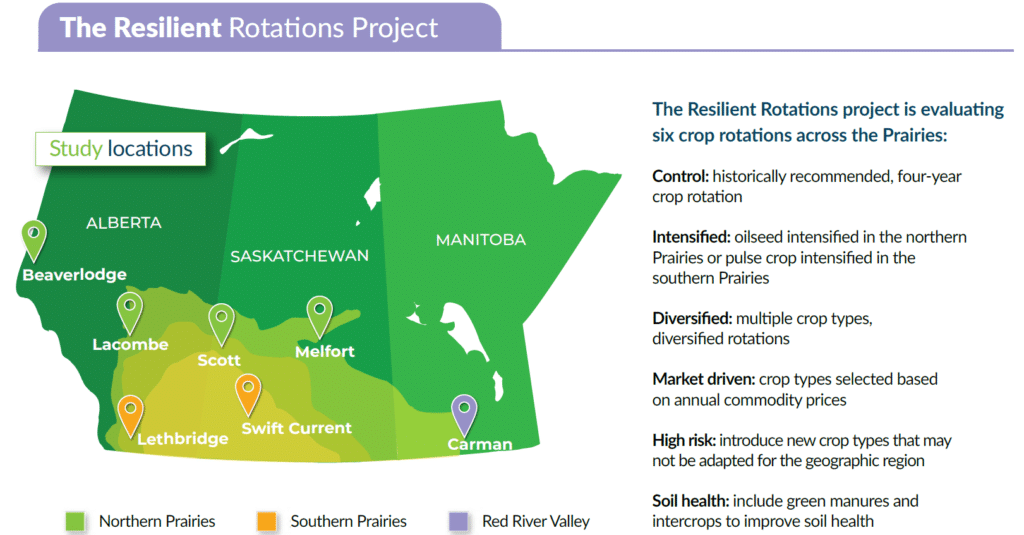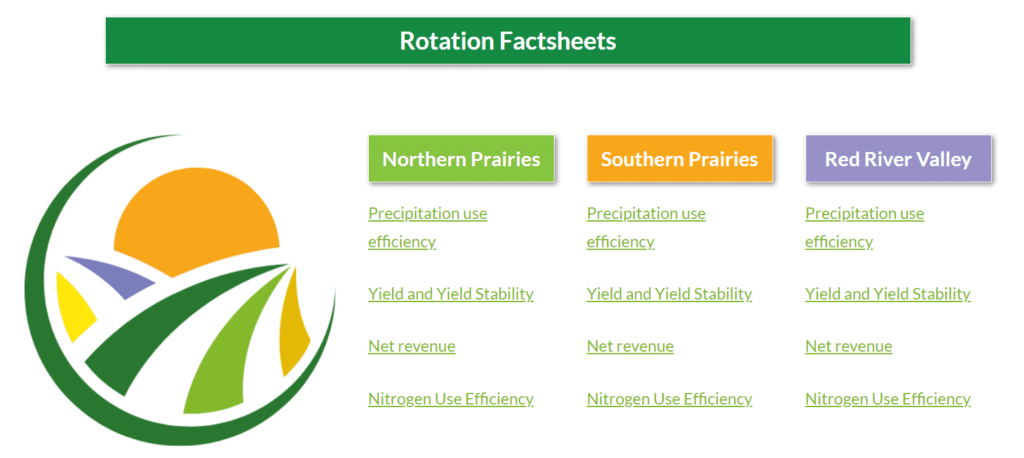Key Result
Site specific cropping systems should be based on local conditions and have to factor in economics and risk levels, but generally, a shift from a simplified two-crop rotation to a rotation that takes a systems approach – considering all the factors that impact the performance of cropping systems could be beneficial.
Project Summary
Overview
The global population is projected to reach 9.6 billion by 2050; this requires Canada, one of the largest grain exporters, to provide increased grain production to meet the food demands. Prairie crop producers have been seeking effective approaches to increase crop yields, improve resource use efficiencies or minimize input costs, enhance agroecosystem resiliency and the whole-farm economics, and decrease the negative impact of farming on the environment while protecting the soil resource.
To achieve those multiple goals simultaneously, a systems approach must be taken where Best Management Practices (BMPs) are integrated together for the entire farm. In this project, six carefully designed cropping systems will be evaluated at seven major Canadian prairie ecosites. The six cropping systems have a unified treatment typology across the seven ecosites while the components of the rotations vary from site to site to reflect the site-specific conditions. The systems’ productivity and resiliency, resource use efficiency, and soil fertility and soil health will be evaluated by a multidisciplinary team of researchers from federal/provincial governments and universities.
The outcome of the project will be evaluated quantitatively using ‘sustainability index’, ‘whole-farm economical assessment’, ‘soil health indicators’, and ‘environmental footprints’.
Objectives
- Determine best (more productive, sustainable, resilient) cropping systems for each of the ecozones.
- Improve nutrient use efficiency by using a nutrient balance model to quantify the crop input and by exploring soil residual nutrients and mineralized-N using contemporary crop rotation sequencing.
- Enhance system resiliency through the integration of BMPs.
- Improve long-term soil health by improving soil fertility and exploring beneficial soil microbiomes.







